Every studio needs microphones. Regardless of the studio’s size or the budget that it operates with, a recording studio is not functional without some good mics. If you have a home studio and are wondering whether dynamic or condenser mics are better for you, you have come to the right place!
Dynamic mics are less sensitive, cheaper, and easier to use. Condenser mics are better for recordings, but they are more expensive, require external hardware and phantom power, and they are more challenging to use. Begin with a dynamic mic and work your way up to a condenser mic for home studio.
Condenser and dynamic microphones each have strengths and weaknesses, but when deciding which type of mic is better for your home studio, some important considerations must be made.
Let’s compare these microphone types to better understand them and determine which mic is best for your recording requirements and challenges.
Dynamic Mics For Home Studio
As we seek the best microphones for your home studio, the best place to start is the dynamic microphone. This type of mic has several benefits for the home studio and is a good mic for most use cases in home studios.
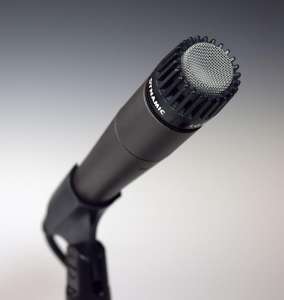
The trouble with home studios is that they are usually multi-purpose rooms where gear is shuffled around frequently, and there are no dedicated recording areas for various setups.
Home studios are not usually sound insulated, which means that outside noise from neighbors, passing traffic, pets, and children are often audible within the room, which can make recording a challenge.
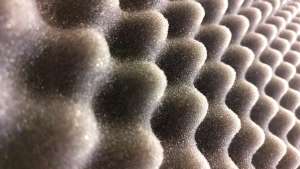
The budget of a home studio is also an important consideration, as most home studios need the best mic possible with the smallest budget possible.
With all of this in mind, the dynamic microphone is an excellent choice for most home studio applications.
Dynamic microphones are far more affordable than condenser microphones, and they are significantly more tough and rugged. These mics are less sensitive than condenser mics due to their smaller diaphragm, and they do not require external power to function.
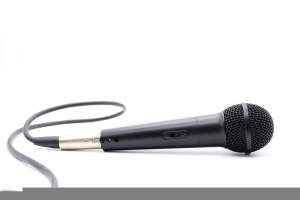
This means that dynamic microphones are less likely to pick up outside noises, and they can handle being moved around inside a studio.
These mics are also wonderfully versatile. A dynamic mic can be used to record vocals and any instrument acoustically or amplified, which means that if you can only afford one mic, it is probably best to get a good dynamic mic.

Dynamic microphones are more versatile than condenser mics, and they are much easier to use, especially in home studios.
Some good examples of dynamic mics for home studios are the Shure SM58 and the Shure SM57. The 58 is a great all-rounder mic, and the 57 is designed for recording instruments. These mics are essentially the same, though, only with a different-sized head, so the 58 is a better all-around option.
Condenser Mics For Home Studio
Everyone who has a studio setup at home has considered using condenser microphones, and the truth is that these mics are usually the best mics for recording, but they may not be the best for use in a home studio.

Condenser microphones are incredibly sensitive. This sensitivity is a result of the way the internal diaphragm of condenser mics is designed. These diaphragms are very thin, and they have an electrified backplate that allows them to pick up very small or quiet sounds and amplify them effectively.
Due to this design, condenser mics are very good for recording, but they are also very good at sensing unwanted sounds and frequencies such as passing traffic or your neighbor sneezing on the other side of your studio wall.
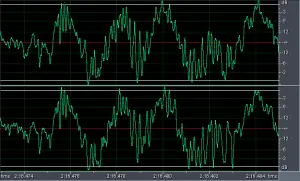
This is a very real problem in home studios, and this makes it difficult to use condenser mics in this type of environment.
However, with that said, if you can deal with having to do multiple retakes due to unwanted noise in the recording, condenser mics can be fantastic for use in home studios.
Condenser mics are preferred by professional studios as they produce very high-quality, very clear audio recordings, and they can be used for any type of recording as well.
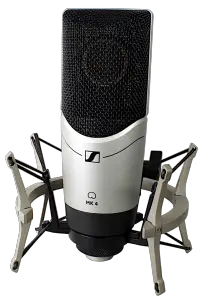
This type of mic can be used for voices, both spoken and sung. They can be used for acoustic and amplified instruments, and they can even be used for recording sound effects due to their advanced sensitivity.
Condenser mics require specialized equipment, including preamps and mixers or interfaces that can supply phantom power to the microphone.
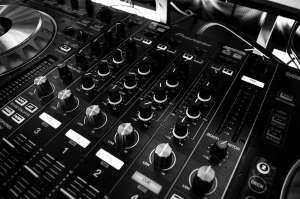
Without phantom power, condenser mics will not work, and they usually require a preamp of some kind to amplify their output signal for the signal to be useable in recordings.
(There are some wireless microphones that do not require phantom power – you can learn more here.)
If you are willing to deal with some more challenging use circumstances and if you don’t mind having to do retakes, then using a condenser mic can be ideal for any studio.
Which Mic Is Best For Your Studio?
At the end of it, we are here to determine which microphone is best for your home studio recording requirements, and there are a few important considerations to make before deciding which mic type is best for you.
If your home studio is not well sound-insulated, if there are a lot of echoes or reverb in the room, or if there is a lot of outside noise, then a dynamic microphone may be the best and most useful option for you.

Dynamic mics are also better if you are on a tight budget, if you can only afford one microphone, or if you will be moving or transporting the microphone a lot. Dynamic mics are less expensive, they are hardier, and they are more versatile than condenser mics.
Condenser microphones are better studio mics, but they are more expensive, more sensitive, and they are more challenging to use.
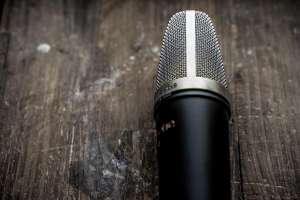
This type of mic is a better microphone for recording, and it is great for almost all applications, but the fact that they require extra hardware, phantom power, and more skill to use makes them less ideal for home studios, especially for those who do not have much experience.
If you are willing to take up the challenge of learning to use a condenser mic well for the sake of better quality recordings, and if you have the budget to do so, then this mic type may be ideal for you.
| Dynamic Mic | Condenser Mic |
|---|---|
| Lower cost | Higher cost |
| Easier to use | Harder to use |
| Less sensitive | More sensitive |
| No phantom power | Needs phantom power |
| No external hardware | Needs external hardware |
| Ideal for home use | Ideal for live recordings and studio |
differences between dynamic
and condenser microphones.
Conclusion
To end off, here is a small piece of advice. If you are setting up a home studio and buying your first microphones, then start with a dynamic mic. Get a solid dynamic mic to learn with and cut your first recordings, and when you gain some more experience and have a bigger budget, invest in a condenser microphone as well.
Starting with a dynamic and acquiring a condenser later on is an ideal way to set up a home studio, as this will provide the best value for money and the easiest use case when first learning to make high-quality recordings.
You can use condenser mics for live performances in certain cases – learn more here.
